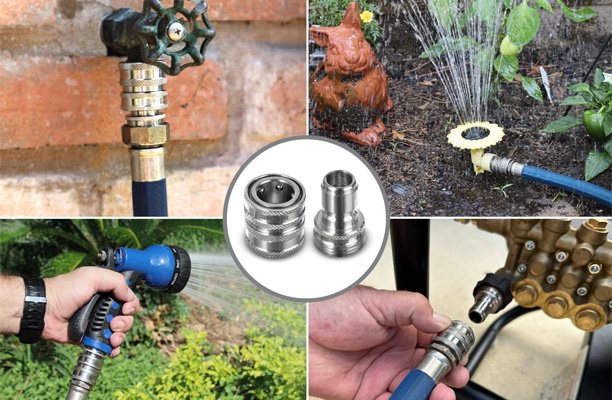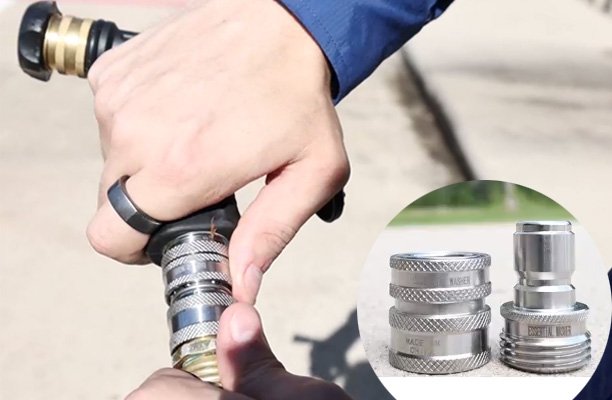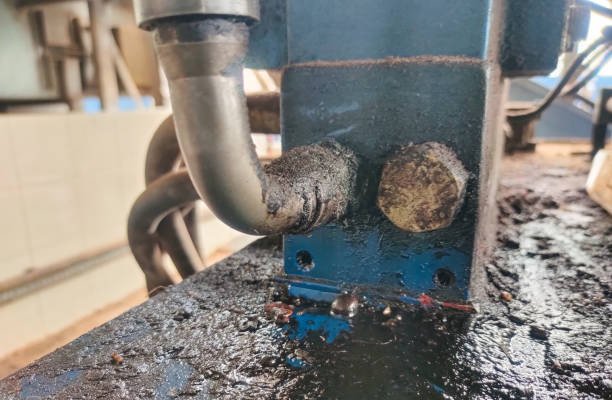Quick connect fittings are essential components in a wide range of industries, including plumbing, HVAC, automotive, and industrial applications. Firstly, their primary purpose is to provide a fast, reliable, and leak-free connection between pipes, hoses, or tubing systems. Furthermore, selecting the right quick connect size is crucial to ensuring compatibility, efficiency, and system longevity. In this article, we’ll delve into the various aspects of quick connect sizes, covering their types, measurements, applications, and troubleshooting tips.
What Are Quick Connect Fittings?
Quick connect fittings, also known as quick-release couplings, are specialized connectors designed to join and disconnect components in a system with minimal effort and no need for specialized tools. These fittings are widely valued for their efficiency, reliability, and ease of use, making them an essential component across various industries.
Definition and Purpose
Quick connect fittings are couplings or connectors that allow for rapid attachment and detachment of hoses, pipes, or tubing. Importantly, their primary purpose is to create a secure and leak-proof seal between two components, even under varying levels of pressure or environmental conditions. These fittings are engineered to enhance operational efficiency, especially in applications where frequent disconnection and reconnection are required.
Key Features:
- Ease of Use: Most fittings are designed for tool-free operations, requiring only a simple push or twist.
- Reliability: They ensure a robust seal that withstands high pressures and prevents leaks.
- Durability: Made from materials like brass, stainless steel, and plastic, these fittings resist wear and environmental damage.
Components and Operation
Components:
- Coupler (Female End): Contains the locking mechanism.
- Plug (Male End): Inserts into the coupler to establish a connection.
- Seals and O-rings: Create a leak-proof seal.
- Locking and Release Mechanisms: Secure the connection and allow for easy disengagement.
Operation Guide:
- Connection: Align and insert the plug into the coupler; some may require a twist.
- Sealing: Internal O-rings or gaskets automatically seal the junction.
- Locking: A mechanical lock activates to secure the plug.
- Disconnection: A simple press or twist on the release mechanism detaches the components.
Industries Applications on Quick Connect Fittings

- Plumbing and HVAC Systems
- Used for water lines, gas lines, and refrigerant systems.
- Enable fast repairs and upgrades without disrupting the entire system.
- Pneumatics
- Found in air tools, compressors, and pneumatic circuits.
- Ensure reliable connections in systems requiring high airflow.
- Automotive
- Used in fuel lines, brake systems, and hydraulic equipment.
- Facilitate quick maintenance and replacements.
- Medical and Laboratory Equipment
- Found in oxygen delivery systems, fluid transfer setups, and lab equipment.
- Ensure sterile and leak-free connections.
- Industrial Applications
- Widely used in hydraulic systems, chemical processing, and manufacturing plants.
- Handle high-pressure and high-temperature conditions effectively.
Benefits of Quick Connect Fittings
- Time Savings: Dramatically reduces downtime during system maintenance.
- Leak Prevention: Ensures a secure seal that maintains system integrity and efficiency.
- Versatility: Available in various sizes and materials to suit different applications.
- Enhanced Safety: Prevents accidental disconnections, ensuring operational safety.
Types of Quick Connect Fittings
1. Push-to-Connect Fittings
Push-to-connect fittings are among the simplest and most user-friendly quick connect options. As the name suggests, these fittings connect by pushing the tubing or pipe into the fitting until it locks into place.
- Key Features:
- Ease of Use: No tools are required for connection or disconnection.
- Leak-Proof Design: Integrated O-rings ensure a secure and airtight seal.
- Versatility: Available for both plastic and metal tubing.
- Applications:
- Widely used in pneumatic systems for air supply to tools and machinery.
- Common in plumbing systems, particularly for water lines and low-pressure applications.
- Frequently found in laboratory setups due to their precise and secure connections.
2. Threaded Quick Connect Fittings
Threaded quick connect fittings offer an additional layer of security through threaded connections, therefore making them suitable for high-pressure or heavy-duty applications.
- Key Features:
- Threaded Coupling: Provides a strong, durable connection that withstands vibration and pressure surges.
- Interchangeability: Standardized thread sizes ensure compatibility with a wide range of systems.
- High-Pressure Resistance: Suitable for applications requiring robust and secure connections.
- Applications:
- Found in hydraulic systems, such as construction equipment and machinery.
- Common in oil and gas industries, where high-pressure pipelines require reliable fittings.
- Used in compressed air systems for industrial tools and machinery.
3. Camlock Quick Connect Fittings
Camlock (or cam and groove) fittings are highly versatile and designed for quick coupling and decoupling in industrial environments.
- Key Features:
- Cam Arms: Two cam levers on the female coupler secure the male adapter.
- Wide Range of Materials: Available in aluminum, stainless steel, brass, and polypropylene to suit various applications.
- Quick Operation: Allows for rapid connection and disconnection without the need for tools.
- Applications:
- Common in industrial fluid transfer, such as chemical processing and water treatment.
- Widely used in agriculture, especially for irrigation systems.
- Frequently seen in tank truck operations for transferring liquids like fuels and oils.
The Critical Role of Sizing in Quick Connect Fittings

1. Ensures a Leak-Free Connection
The primary purpose of a quick connect fitting is to create a secure and leak-proof seal between two components. Correct sizing is essential for achieving this goal.
- Proper Fit: The fitting must align perfectly with the tubing or hose diameter to prevent gaps where leaks can occur.
- Avoids Pressure Loss: A snug fit ensures that the system maintains consistent pressure, crucial for both performance and safety.
- Prevents Fluid or Gas Loss: Incorrectly sized fittings can allow the escape of fluids or gases, leading to inefficiencies and potential hazards.
2. Maximizes System Efficiency
The size of a fitting directly impacts the flow rate and pressure within a system. A properly sized fitting ensures optimal performance:
- Maintains Flow Rate: Fittings that are too small restrict flow, while oversized fittings can lead to turbulence, both of which reduce efficiency.
- Reduces Energy Consumption: Systems operating at peak efficiency require less energy, lowering operational costs.
- Prevents Bottlenecks: Correct sizing eliminates chokepoints in the system, ensuring smooth and uninterrupted operation.
3. Supports Safety and Reliability
Safety is a top priority in any system involving quick connect fittings, and proper sizing plays a key role in mitigating risks.
- Prevents Failures: Incorrectly sized fittings are more prone to disconnecting under pressure, leading to potential accidents.
- Handles Rated Pressure: Each fitting is designed to handle a specific pressure range. Using a fitting that is too small or too large for the system’s requirements can result in dangerous failures.
- Reduces Wear and Tear: Mismatched sizes can cause undue stress on the fitting and surrounding components, consequently increasing the likelihood of breakdowns.
Standard Sizing of Quick Connects
Quick connect sizes are standardized to ensure compatibility across different systems and applications. These sizes are typically classified as either imperial or metric, depending on regional standards and application requirements.
- Imperial Sizing: Common sizes include 1/4 inch, 3/8 inch, and 1/2 inch. These are widely used in North America for applications such as air compressors, garden hoses, and plumbing systems.
- Metric Sizing: Popular in Europe and Asia, metric sizes like 6mm, 8mm, and 10mm are prevalent in industrial and pneumatic systems.
- Importance of Standardization: Adhering to standard sizes ensures that fittings are interchangeable, thus simplifying maintenance and reducing downtime.
Common Materials Used in Quick Connect Fittings
The material of a quick connect fitting plays a significant role in its performance, durability, and application suitability.
- Brass: Ideal for plumbing and low-pressure applications due to its corrosion resistance and cost-effectiveness.
- Stainless Steel: Preferred for high-pressure systems and harsh environments due to its strength and resistance to corrosion.
- Plastic: Lightweight and economical, plastic fittings are commonly used in medical and laboratory equipment.
Selection and Maintenance
Choosing the Right Size
- Identify System Requirements: Determine flow rate, pressure, and application specifics.
- Measure Accurately: Use proper tools to ensure precise measurements.
- Consult with Experts: Reach out to manufacturers or suppliers for guidance.
Maintenance and Replacement Tips
- Signs It’s Time to Replace:
- Visible wear or cracks in the fitting.
- Leaks or reduced system pressure.
- Difficulty in connecting or disconnecting.
- Ensuring Compatibility: Always replace fittings with the same size and material to avoid performance issues.
Cost and Value Analysis
- Investing in Quality: Higher initial costs for premium materials like stainless steel pay off in longevity and reliability.
- Balancing Cost and Performance: Select fittings that offer the best compromise between price and operational benefits.
Conclusion
Quick connect fittings are essential for efficient and safe system performance. By understanding the Quick connect fittings are essential for efficient and safe system performance. Additionally, by understanding the different quick connect sizes, their applications, and the importance of proper sizing, you can ensure your systems are leak-free, reliable, and cost-effective.
FAQs
- What is the most common quick connect size?
The 1/4-inch size is the most widely used, especially in pneumatic and plumbing systems. - How do I measure a quick connect fitting?
Use calipers to measure the inner or outer diameter and compare it to size charts. - Are metric quick connects compatible with imperial sizes?
They can be with adapters, but slight variations can affect the fit. - What materials are best for quick connect fittings?
Brass for plumbing, stainless steel for high pressure, and plastic for lightweight applications. - Why is my quick connect leaking?
Common causes include worn seals, improper sizing, or debris. - Can I reuse quick connect fittings?
Yes, but ensure they are undamaged and compatible with the system.





